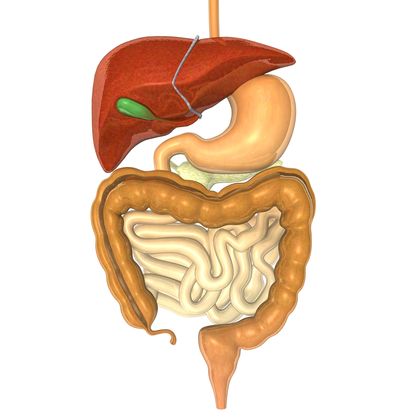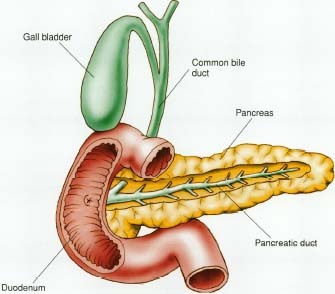Pancreatitis

Pancreatitis (pan-kree-a-TY-tis) is a painful inflammation * of the pancreas.
KEYWORDS
for searching the Internet and other reference sources
Alcohol abuse
Biliary tract disease
Inflammation
* inflammation (in-fla-MAY-shun) is the body's response to infection or irritation, usually marked by heat swelling, redness, and pain.
What Is Pancreatitis?
The pancreas (PAN-kree-us) is a gland about 6 inches long that is shaped like a flattened pear and lies next to the stomach with its wider end near the

When the pancreas becomes inflamed, its powerful digestive enzymes leak out and begin to attack the pancreas itself. These enzymes cause damage that results in swelling of tissues and blood vessels. There are two forms of pancreatitis. Acute * pancreatitis occurs when the pan-creas suddenly becomes inflamed but then gets better. Chronic * pancre-atitis is persistent inflammation of the pancreas or a combination of persistent inflammation with repeated attacks of acute pancreatitis. Over time, the damage caused by chronic pancreatitis can lead to malab-sorption (when the body cannot absorb the nutrients and calories it needs) and an abnormal secretion of insulin, that is, diabetes * .
What Causes Pancreatitis?
There are many causes of pancreatitis, but most cases of acute pancreati-tis are caused by alcohol abuse or gallstones * . A patient usually feels severe pain in the upper abdomen * that may last for hours or for a few days. The abdomen may be swollen and tender. Other symptoms may include nausea, vomiting, fever, and an increased pulse rate.
How Is Pancreatitis Diagnosed?
In addition to pain, patients with chronic pancreatitis usually show signs of long-term damage such as malabsorption or diabetes. Because acute pancreatitis causes an increase in certain levels of digestive enzymes in the blood, a blood test may confirm a diagnosis of the condition. Sometimes, x-rays such as CT scans * are used to make the diagnosis.
How Is Pancreatitis Treated?
Treatment for pancreatitis depends on the type, cause, and severity of the condition. Although acute pancreatitis usually gets better on its own, patients often are hospitalized while the attack lasts. If the patient has gallstones, surgery may be needed to remove them.
Patients with chronic pancreatitis will be placed on a strict diet that limits fat and protein, which the damaged pancreas can no longer digest properly. Patients sometimes are given replacement enzymes to help digest their food, and a doctor may prescribe medication to relieve pain. Because both acute and chronic pancreatitis often are caused by alcohol, the best way to prevent the disease is to avoid drinking.
* hormones are chemicals that are produced by different glands in the body. Hormones are like the body's ambassadors: they are created in one place but are sent through the body to have specific regulatory effects in different places.
* enzymes (EN-zymz) are natural substances that speed up specific chemical reactions in the body.
* acute means sudden.
* chronic (KRON-ik) means continuing for a long period of time.
* diabetes (dy-a-BEE-teez) is an impaired ability to break down carbohydrates, proteins, and fats because the body does not produce enough insulin or cannot use the insulin it makes.
* gallstones (GAWL-stonz) are hard masses that form in the gallbladder or bile duct.
* abdomen (AB-do-men), commonly called the belly, is the portion of the body between the chest or thorax (THOR-aks) and the pelvis.
* CT scans or CAT scans are the shortened names for computerized axial tomography (to-MOG-ra-fee), which uses computers to view cross sections inside the body.
* cancer is an uncontrolled growth of cells or tissue the natural (untreated) course of which is often fatal.
With treatment, the outlook for chronic pancreatitis often is good, but patients must stop drinking. Other less common causes of pancreatitis, such as infections, cancer * , and reactions to medicines or chemicals, need to be diagnosed properly in order to be treated the best way possible.
See also
Alcoholism
Diabetes
Gallstones
Resource
U.S. National Digestive Diseases Information Clearinghouse, 2
Information Way, Bethesda, MD 20892-3570. Part of the U.S. National
Institutes of Health (NIH), the NDDIC publishes brochures about
digestive diseases and posts a fact sheet about pancreatitis at its
website. Telephone 301-654-3810
http://www.niddk.nih.gov/health/digest/pubs/pancreas/pancreas.htm
Comment about this article, ask questions, or add new information about this topic: